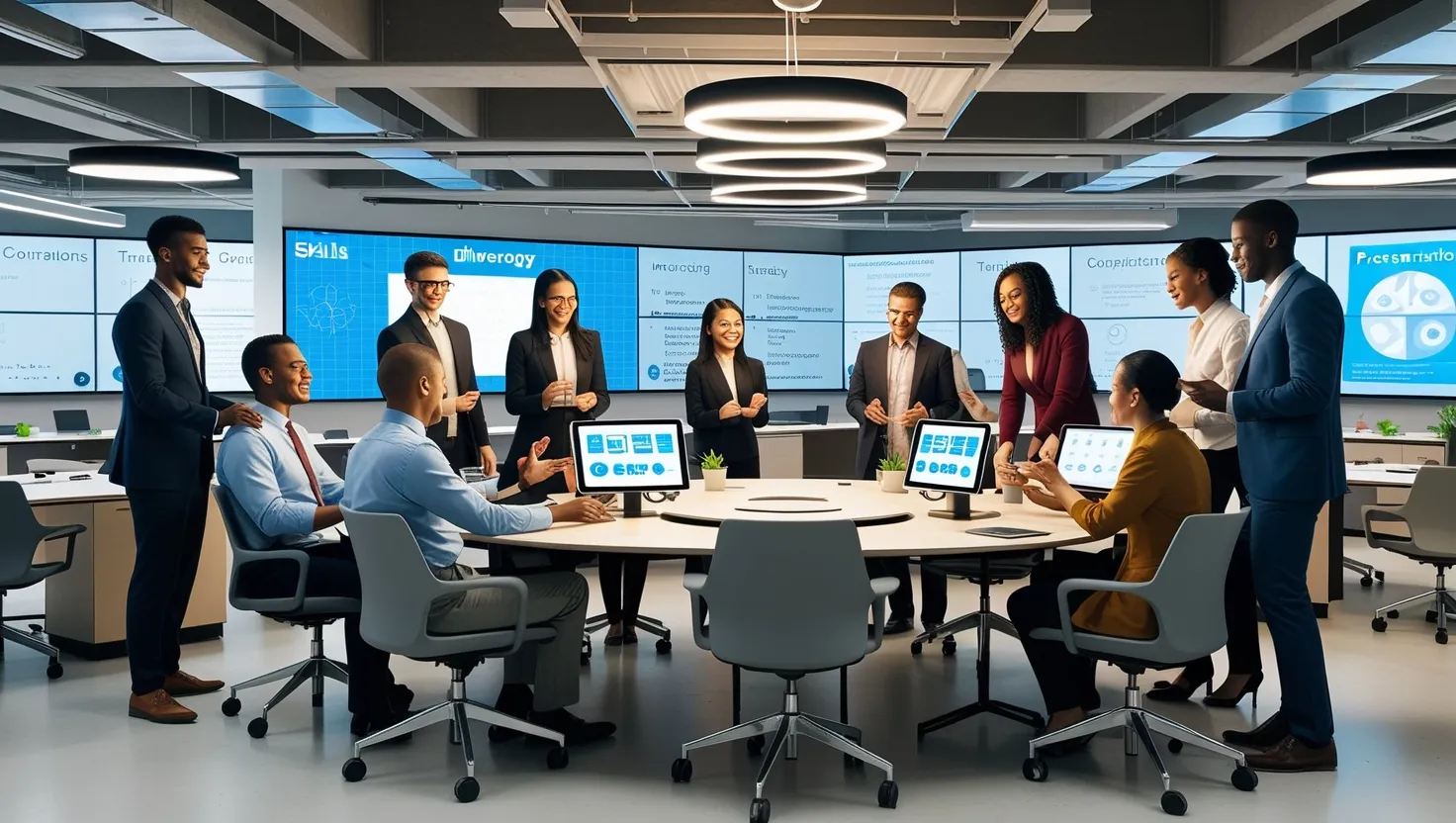In the fast-paced world of modern business, the ability to learn and adapt quickly is no longer a luxury, but a necessity. As a leader, fostering a culture of continuous learning is crucial for driving innovation, enhancing adaptability, and boosting employee engagement. Here are six leadership strategies that can help you achieve this goal, along with some unique insights and perspectives on how to implement them effectively.
The Power of Skill-Sharing Sessions
Imagine walking into a meeting room where your marketing team is explaining their latest campaign strategies to the IT department. This is not just a casual gathering; it’s a deliberate effort to share skills and knowledge across different departments. Regular skill-sharing sessions can be a game-changer. They break down departmental silos and foster an environment where employees can learn from each other’s expertise.
For instance, when a software engineer explains the intricacies of coding to a sales team, it opens up new avenues for collaboration. The sales team can better understand the product’s capabilities, while the engineer gains insights into customer needs. This cross-pollination of knowledge not only enhances collaboration but also drives innovation. Employees start to see the bigger picture and understand how their work impacts other areas of the organization.
Personalized Learning Budgets
Every employee has unique learning needs and interests. Providing personalized learning budgets acknowledges this diversity and empowers employees to take ownership of their professional development. This approach is more than just a perk; it’s a strategic move to ensure that your workforce is constantly upgrading their skills.
When employees are given the freedom to choose their learning paths, they are more likely to be engaged and motivated. It’s about trusting your team to make the right decisions for their growth. For example, an employee might choose to attend a conference on the latest industry trends or take an online course in a new technology. This personalized approach ensures that the learning is relevant and impactful, leading to a more skilled and adaptable workforce.
Cross-Departmental Project Opportunities
Cross-departmental projects are another effective way to foster continuous learning. By bringing together employees from different departments to work on a common project, you create an environment where diverse skills and perspectives come together. This not only enhances collaboration but also broadens the skill sets of your employees.
For example, a project that involves the marketing, sales, and product development teams working together can lead to innovative solutions that might not have been possible within departmental silos. Employees learn to appreciate the challenges and approaches of other departments, which fosters a more holistic understanding of the organization’s goals. This integrated approach also improves communication and workflow, leading to more efficient and effective project execution.
The Value of Mentorship Programs
Mentorship programs are a timeless strategy for fostering continuous learning. They pair experienced employees with newer ones, creating a relationship that is both supportive and educational. Mentors can share their wisdom, provide guidance, and offer valuable feedback that helps mentees grow both personally and professionally.
A well-structured mentorship program can be particularly beneficial for new hires. It helps them integrate into the organization more smoothly and quickly gain the knowledge and skills they need to excel. Moreover, mentorship programs can also help in retaining talent. When employees feel supported and guided, they are more likely to stay with the organization and continue their growth journey.
Encouraging Experimentation and Learning from Failures
Innovation often requires taking risks and experimenting with new ideas. However, this can be daunting if the culture does not support learning from failures. Leaders must create an environment where experimentation is encouraged and failures are seen as learning opportunities.
When employees feel safe to try new things without the fear of retribution, they are more likely to innovate. Leaders should model this behavior themselves, sharing their own experiences of failure and how they learned from them. This approach not only fosters a culture of innovation but also builds resilience within the team. Employees learn to view failures as stepping stones to success rather than as setbacks.
Recognizing and Rewarding Knowledge Acquisition
Recognizing and rewarding employees for their knowledge acquisition is a powerful motivator. It sends a clear message that learning is valued and appreciated within the organization. This can be done through various means such as awards, bonuses, or even public recognition.
For example, a company could have a “Learner of the Month” award where employees who have demonstrated significant learning and growth are recognized. This not only motivates the individual but also inspires others to follow suit. It creates a culture where learning is celebrated, and employees are encouraged to continuously improve their skills.
Overcoming Resistance to a Learning Culture
Implementing a culture of continuous learning is not without its challenges. One of the biggest hurdles is resistance from employees who may feel comfortable with the status quo or fear the unknown. Leaders must address this resistance proactively.
One way to do this is by involving employees in the planning and implementation process. When employees feel their voices are heard and their ideas are valued, they are more likely to buy into the new culture. Leaders should also communicate clearly the benefits of continuous learning, both for the individual and the organization.
Another approach is to start small. Introduce new learning initiatives gradually, allowing employees to adjust and see the positive impact. Celebrate early successes and use them as examples to motivate others. By doing so, you build momentum and create a sense of ownership among your team.
Examples of Organizations that Excel in Continuous Learning
There are several organizations that stand out for their commitment to continuous learning. Companies like Google and Amazon are known for their innovative learning cultures. Google, for instance, has a program called “Google University” which offers a wide range of courses and training programs for its employees. This includes everything from technical skills to leadership development.
Amazon, on the other hand, has a robust mentorship program and encourages cross-departmental collaboration. These companies understand that continuous learning is key to staying ahead in a rapidly changing world. By investing in their employees’ growth, they ensure that their workforce is always equipped with the latest skills and knowledge.
The Role of Leaders in Modeling Lifelong Learning
Leaders play a critical role in fostering a culture of continuous learning. It starts with modeling the behavior themselves. When leaders demonstrate a commitment to lifelong learning, it sets the tone for the entire organization.
Leaders should be open about their own learning journeys, sharing what they are learning and how it is impacting their work. This transparency inspires trust and motivates employees to follow suit. Leaders should also lead by example in terms of experimentation and learning from failures. By showing that it’s okay to take risks and learn from mistakes, leaders create a safe and supportive environment for innovation.
In conclusion, fostering a culture of continuous learning is a multifaceted endeavor that requires deliberate strategies and leadership commitment. By implementing regular skill-sharing sessions, providing personalized learning budgets, creating cross-departmental project opportunities, establishing mentorship programs, encouraging experimentation, and recognizing knowledge acquisition, leaders can drive innovation, adaptability, and employee engagement.
It’s about creating an environment where learning is not just encouraged but celebrated. Leaders who model lifelong learning and support their teams in their growth journeys are more likely to succeed in today’s dynamic business landscape. As we move forward, it’s clear that continuous learning will be the cornerstone of organizational success, and leaders who embrace this culture will be the ones leading the way.






